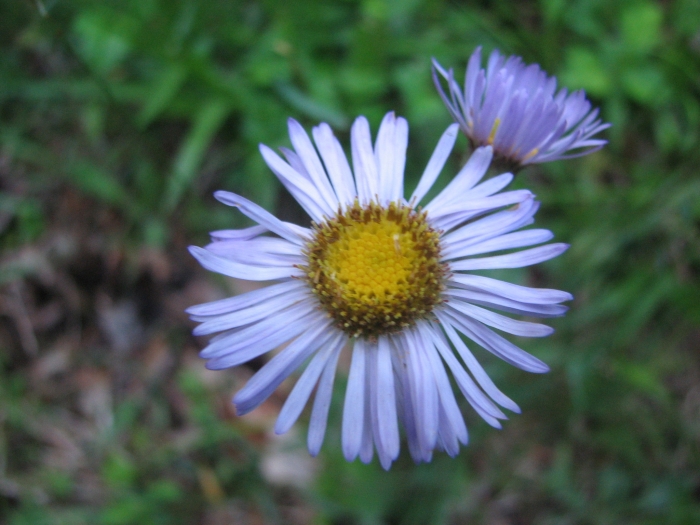Robin’s Plantain
(Erigeron pulchellus)
Robin’s Plantain (Erigeron pulchellus)
/
/

Chris Hoess
CC BY-SA 4.0
Image By:
Chris Hoess
Recorded By:
Copyright:
CC BY-SA 4.0
Copyright Notice:
Photo by: Chris Hoess | License Type: CC BY-SA 4.0 | License URL: http://creativecommons.org/licenses/by-sa/4.0/ | Rights Holder: Chris Hoess | Publisher: iNaturalist | Date Created: 2013-05-15T19:03:09-07:00 |
























Estimated Native Range
Summary
Erigeron pulchellus, commonly known as Robin’s plantain or blue spring daisy, is a perennial herb native to open woodlands, forest edges, and meadows in Eastern Canada and the United States. It typically grows up to 2 feet tall and can spread to form clumps. This plant features basal rosettes of hairy, spoon-shaped leaves and erect stems topped with daisy-like flowers. The flowers, which bloom from April to June, have white to pale pink or pale blue ray florets surrounding a center of yellow disc florets and are moderately showy.
Robin’s plantain is valued for its ability to attract pollinators such as bees and butterflies, making it a beneficial addition to wildlife gardens and naturalized areas. It is often used in border plantings, native plant gardens, and as ground cover due to its spreading habit. This plant is adaptable to a range of soil types, provided they are well-drained, and it can tolerate both full sun and partial shade. While generally low-maintenance, it can be susceptible to powdery mildew in humid conditions. Erigeron pulchellus is not known for aggressive roots or significant disease problems, making it a reliable choice for gardeners. It is also not typically invasive when grown outside its native range.CC BY-SA 4.0
Robin’s plantain is valued for its ability to attract pollinators such as bees and butterflies, making it a beneficial addition to wildlife gardens and naturalized areas. It is often used in border plantings, native plant gardens, and as ground cover due to its spreading habit. This plant is adaptable to a range of soil types, provided they are well-drained, and it can tolerate both full sun and partial shade. While generally low-maintenance, it can be susceptible to powdery mildew in humid conditions. Erigeron pulchellus is not known for aggressive roots or significant disease problems, making it a reliable choice for gardeners. It is also not typically invasive when grown outside its native range.CC BY-SA 4.0
Plant Description
- Plant Type: Herb
- Height: 1-2 feet
- Width: 1.5-2 feet
- Growth Rate: Moderate
- Flower Color: Blue, White
- Flowering Season: Spring, Summer
- Leaf Retention: Evergreen
Growth Requirements
- Sun: Full Sun, Part Shade
- Water: Medium
- Drainage: Fast, Medium
Common Uses
Border Plant, Butterfly Garden, Erosion Control, Groundcover, Low Maintenance, Street Planting
Natural Habitat
Native to open woodlands, forest edges, and meadows
Other Names
Common Names: Hairy Fleabane , Robin’s Fleabane , Poor Robin Fleabane , Robin’s-Plantain Fleabane , Poor Robin’s-Plantain , Blue Spring Daisy
Scientific Names: Erigeron pulchellus , Aster tenuifolius var. bellidifolius , Erigeron acris , Erigeron alpinus var. alpinus , Erigeron alpinus var. unifloroides , Erigeron bellidifolius , Erigeron bellidifolius , Erigeron bellidifolius var. bellidifolius , Erigeron bellidifolius var. scariosus , Erigeron bethlehemi
GBIF Accepted Name: